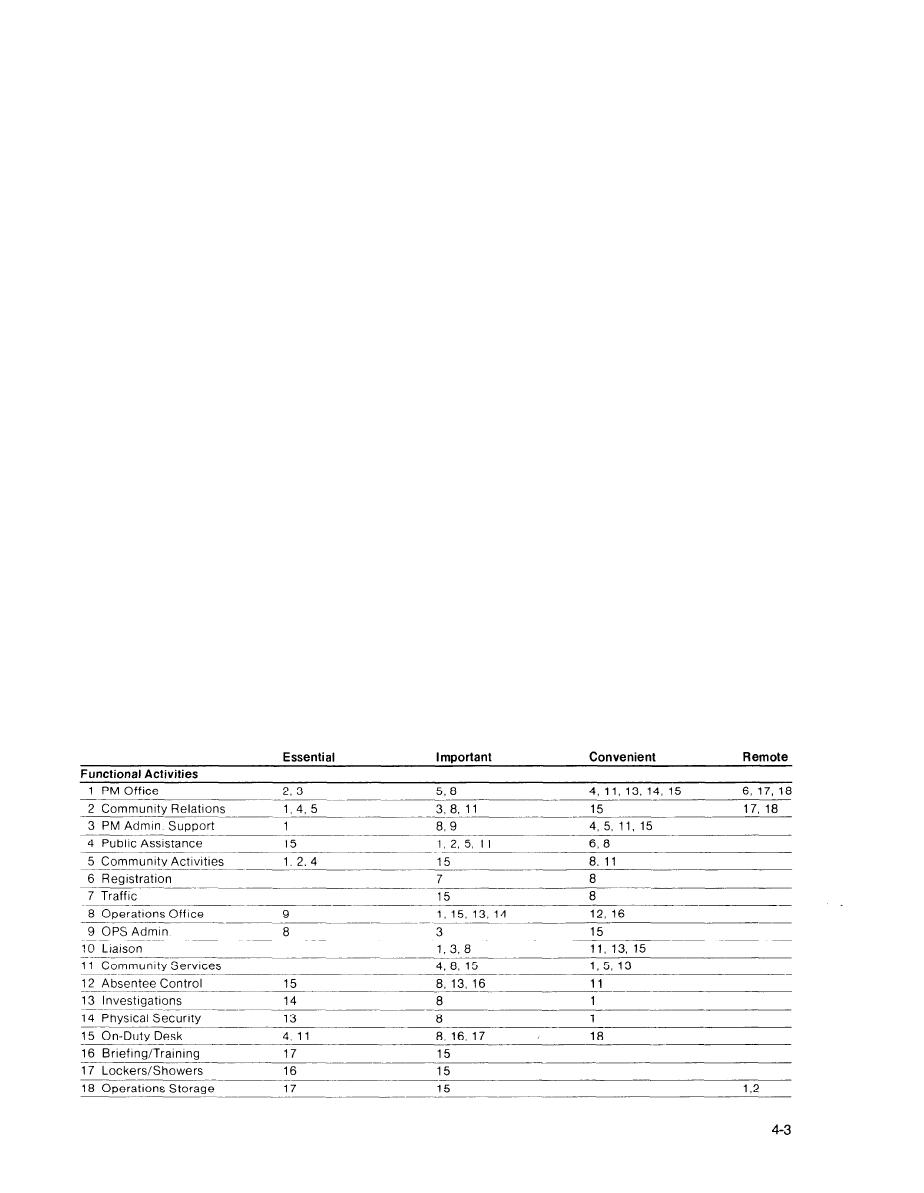
Design Guide: Military Police Facilities
DG 1110-3-146
December 1979
Space Organization Considerations: Functional Characteristics
number of subordinate and separate operations sec-
which are administrative in nature. For example, ex-
tions; these sections are often larger in terms of staff and
cept for the general public service activities of the
space requirements than most sub-sections of small,
Operations Administration section and the MP Desk,
less organizationally elaborate MP operations. Thus, in
the Operations Office supervises, manages and sup-
developing space organization principles that indicate
ports the routine aspects of all operations activities.
desired functional relationships, the use of a semantic
Most subordinate operations activities are generally
scale will best describe the degree of physical adjacency
considered to be private-type activities. These activ-
or separation among or within the major activity group-
ities employ the greatest number of military police
ings in a military police facility. As a guide to the layout of
personnel, perform most direct law enforcement and
functional relationships, average distances have been
crime prevention functions, and receive and process
indicated for the descriptions listed below. These dis-
all detainees and offenders. Descriptions of oper-
tances should be adjusted to the scale of individual oper-
ations activities must indicate the natural and de-
ations. The types of functional relationships described
sirable functional and physical relationships that exist
below are typical, not absolute, and may vary according
within the Operations Office, between it and the sub-
to the appraisal of local conditions and requirements.
ordinate functional sections, and between the various
individual functional activities of military police Oper-
ations branch and other military police activities.
(1) Essential (Within a 25 ft. radius) This describes
relationships where it is imperative that the activities
b. FUNCTIONAL RELATIONSHIPS The functional
be physically adjacent in order to operate effectively.
relationships of Administrative and Operations activities
are best expressed in physical adjacencies or separa-
(2) Important (Within a 50 ft. radius) This describes
tions Emphasis should be placed on identifying rela-
relationships where it is highly desirable for the activ-
tionships that will effect the most desirable and efficient
ities to be physically close to facilitate interaction.
operating conditions. Table 4-1 indicates typical func-
tional relationships for military police activities. The de-
gree of physical adjacency or separation will depend
(3) Convenient (Within 100 ft. radius) This de-
on the scale of the individual military police activity or
scribes relationships where it would be satisfactory if
organization being considered. Compared to the de-
the activities were not physically close and where
gree of physical adjacency required by small activities or
effectiveness would not be impaired by separation.
organizations, large military police operations will re-
quire a greater degree of latitude in determining the
(4) Remote (Beyond 100 ft.) This describes rela-
proper distance between functional activities sharing
tionships where it would be expedient if the activities
functionally important relationships. Larger and more
were physically remote, since functional effective-
sophisticated MP operations are often comprised of a
ness might be impaired by physical interaction.
Table 4-1: Functional Relationships


 Previous Page
Previous Page
